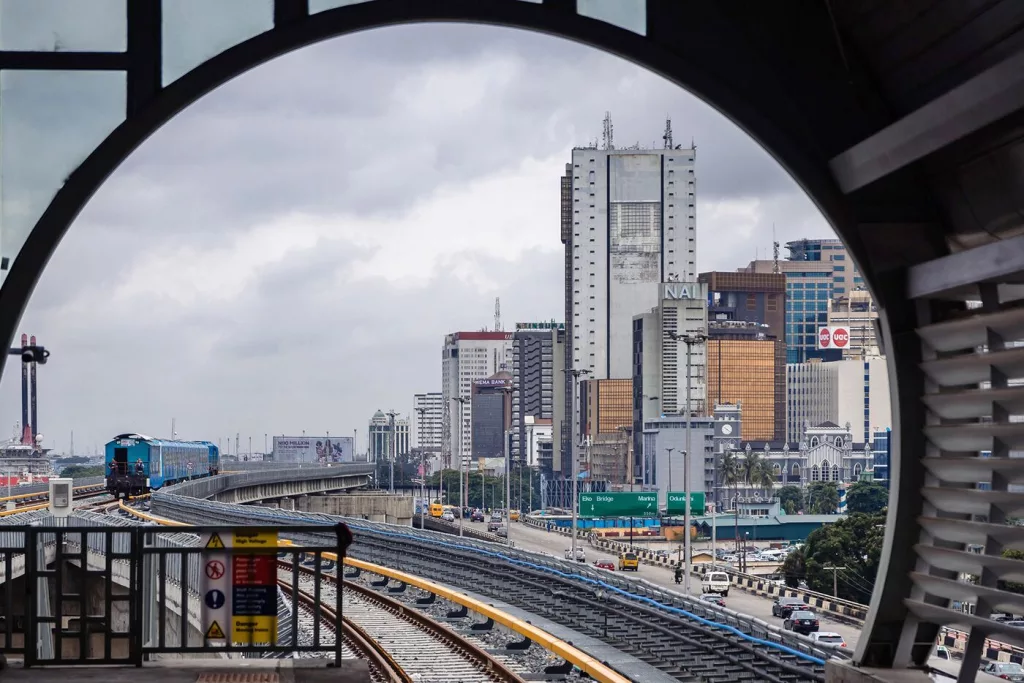

Lagos, home to over 20 million people and infamous for its traffic, is on the brink of transformation. The Lagos Blue Line, a revolutionary transportation project, is set to reshape not only how people move around the city but also the real estate landscape.


In this article, we’ll take a closer look at this remarkable development, its benefits, and how it’s poised to drive significant changes in the real estate sector.
The Lagos Blue Line: A Game-Changer for Transportation: The Lagos Blue Line was built by the China Civil Engineering Construction Corporation (CCECC), It’s Nigeria’s first electric rapid transit line and a first for West Africa. This 27-kilometer marvel connects Okokomaiko in the west to Marina in the east, with stations along the way.
Key Features
- Impressive Capacity: Each train on the Blue Line is as long as 10 cars and can carry up to 1,200 passengers, making it capable of accommodating a whopping 500,000 passengers daily.
- Reduced Travel Time: Commuters can look forward to reaching their destinations in just 35 minutes, a remarkable improvement over the hours spent stuck in Lagos’ notorious traffic.
- Eco-Friendly: The Blue Line stands as a symbol of sustainability. It’s a zero-emission mode of transportation, meaning it won’t contribute to air pollution, making Lagos a cleaner and healthier place to live.
Easing Traffic Congestion Lagos’ traffic woes have long been a cause for concern, affecting everyone’s daily life. The Blue Line promises to be the solution we’ve all been waiting for, with estimates suggesting it could reduce traffic congestion by up to 20%. Imagine the time and stress saved during your daily commute!


The Real Estate Revolution Now, let’s dive into the real estate aspect of this transformative project. The Blue Line isn’t just about transportation; it’s set to redefine property values and opportunities in Lagos.
Impact on Property Values Studies from around the world has shown that the introduction of rapid transit systems can lead to significant increases in property values in the vicinity. Here’s how it works:
- In São Paulo, Brazil, property prices within a 1-kilometer radius of a transit line shot up by as much as 30%.
- Similarly, in Manila, Philippines, property values within 500 meters of a transit line surged by up to 15%.
In Lagos, the Lagos Metropolitan Area Transport Authority (LAMATA) conducted a study that found property prices within 500 meters of a rapid transit station increased by an average of 20% after the station’s opening. High-demand areas, especially those near commercial centers and transportation hubs like the Marina station on the Blue Line, are expected to see even more significant price increases, potentially reaching up to 30%.
The Long-Term Outlook As the Blue Line gains popularity and the areas it serves continue to develop, property prices are likely to keep rising. This presents a golden opportunity for real estate investors and homeowners alike to benefit from the growing appeal of these areas.
Looking Ahead The Lagos Blue Line is not just about reducing traffic or improving transportation; it’s about transforming the real estate landscape in Lagos. Beyond boosting property values, it will make areas along its route more attractive for businesses and residents, fueling economic growth and prosperity.
In conclusion, the Lagos Blue Line isn’t just a transportation project; it’s a catalyst for change, particularly in the real estate sector. If you’re looking for a smart real estate investment, consider the areas along the Blue Line’s route. The future of Lagos is on the right track, and it’s an exciting journey for both commuters and real estate investors.
